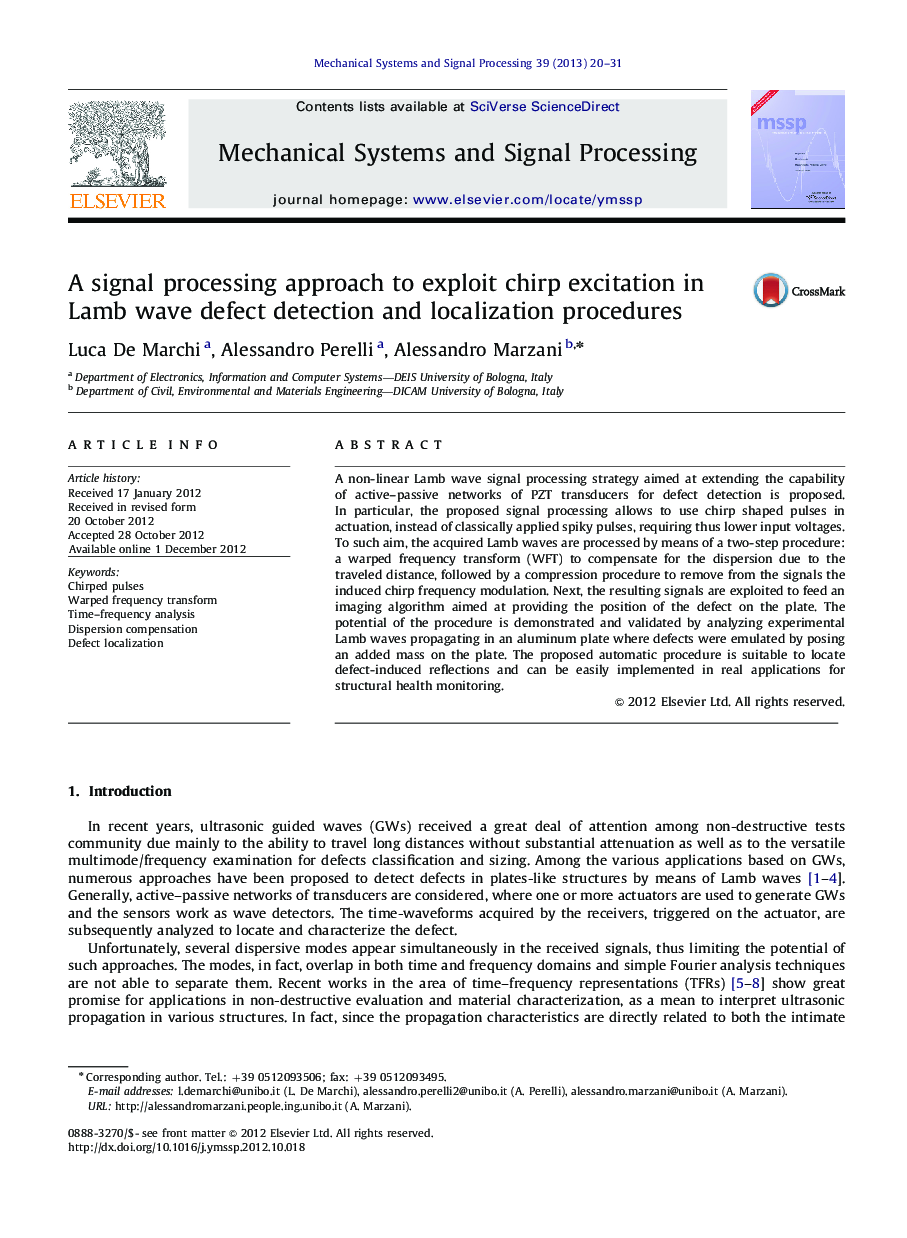| Article ID | Journal | Published Year | Pages | File Type |
|---|---|---|---|---|
| 561218 | Mechanical Systems and Signal Processing | 2013 | 12 Pages |
A non-linear Lamb wave signal processing strategy aimed at extending the capability of active–passive networks of PZT transducers for defect detection is proposed. In particular, the proposed signal processing allows to use chirp shaped pulses in actuation, instead of classically applied spiky pulses, requiring thus lower input voltages. To such aim, the acquired Lamb waves are processed by means of a two-step procedure: a warped frequency transform (WFT) to compensate for the dispersion due to the traveled distance, followed by a compression procedure to remove from the signals the induced chirp frequency modulation. Next, the resulting signals are exploited to feed an imaging algorithm aimed at providing the position of the defect on the plate. The potential of the procedure is demonstrated and validated by analyzing experimental Lamb waves propagating in an aluminum plate where defects were emulated by posing an added mass on the plate. The proposed automatic procedure is suitable to locate defect-induced reflections and can be easily implemented in real applications for structural health monitoring.
► The proposed strategy extends the Lamb waves defect detection methodologies to chirp actuation. ► By means of chirped pulses weak reflectors can be detected by using low voltage signals in actuation. ► A signal processing procedure to compensate dispersive chirp actuated Lamb waves is proposed. ► The warped frequency transform allows for a time–frequency sampling matched to the dispersive behavior of the Lamb Waves. ► Compensated signals are used to locate defects in plates with a spare array of PZT sensors.
